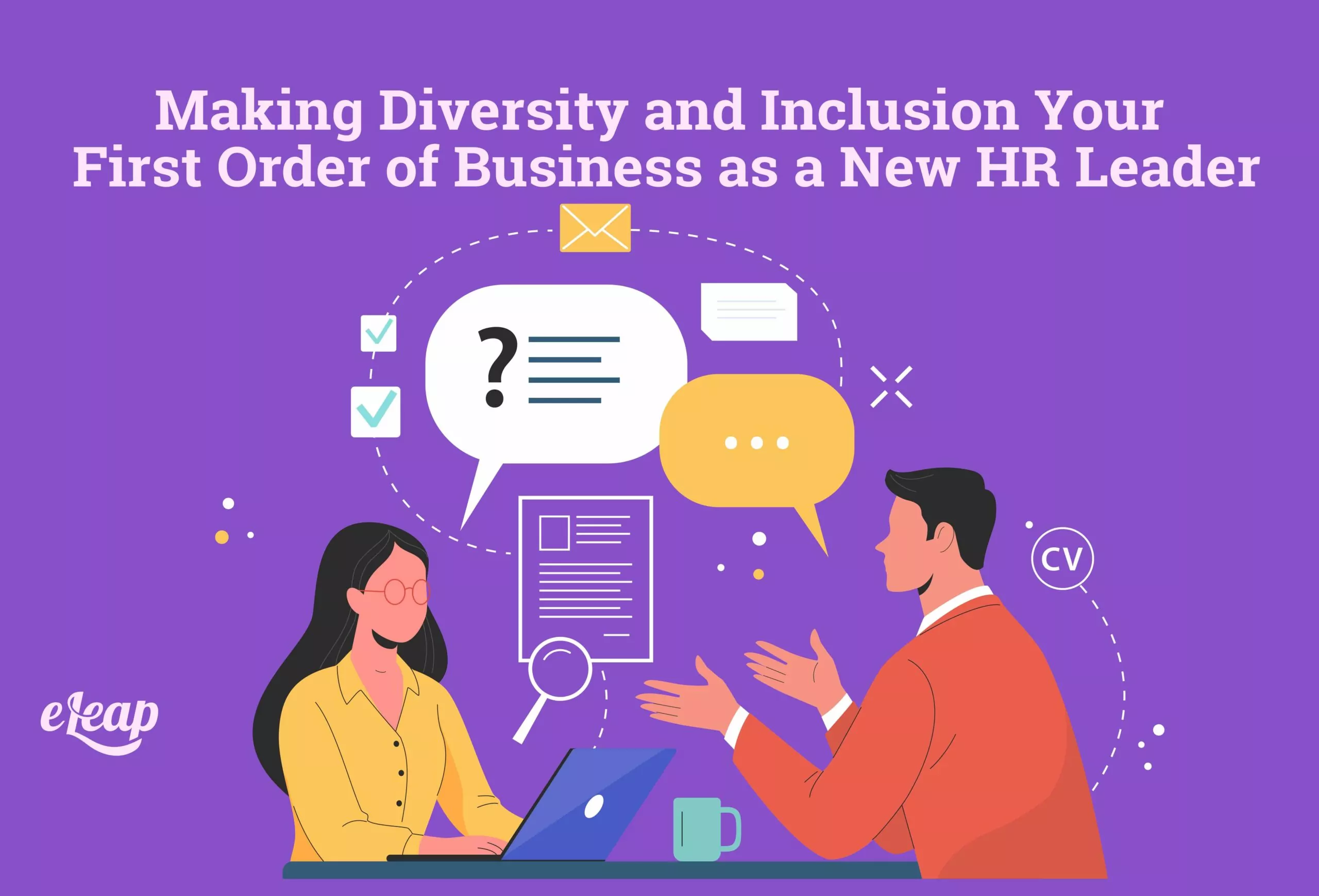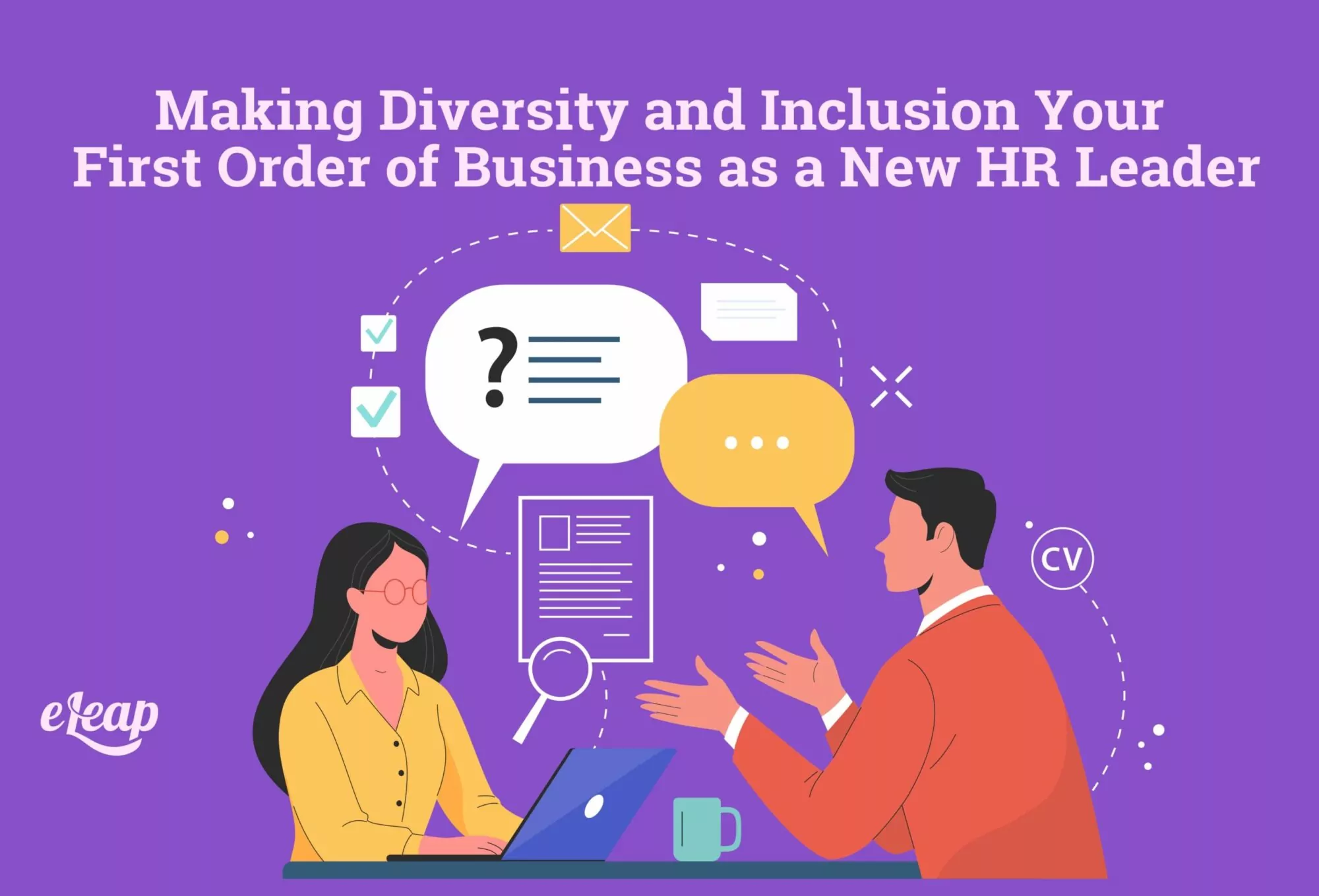Making Diversity and Inclusion Your First Order of Business as a New HR Leader

Walking into a new organization with big dreams and ideas is always a balancing act—you want to make sure that you deliver on your promises while also living up to the needs and expectations of the organization that has brought you on board. For new HR leaders, it’s critical to identify the best way to approach integrating themselves into the company. Several different areas could be reviewed and investigated for improvement in human resources and people management, and it’s up to you to figure out where to start.
Some HR leaders will be fortunate enough to find a role where everything is already in order, processes are in place, and there isn’t a lot of “fixing” that needs to be done. Unfortunately, however, that’s more often the exception than the rule. That’s why new HR leaders need to know where to focus. Right now, the best thing that any human resources employee or manager can do is highlight the importance of diversity and inclusion. Not only that, but they should also act on that importance by creating training and development opportunities, seeking out more diverse talent, and so forth.
There’s no set path when blazing the trail of diversity and inclusion. It’s different for each organization and each HR department. Fortunately, there are some best practices and strategies available to help leaders create their own plans.

Create a Standard Interview Experience
A standard interview process means that it’s always the same. You ask the same questions to candidates, go through the same steps, and give everyone the same experience. That will ensure that you are embracing differences in candidates and looking for top talent, regardless of their demographics, professional background, or anything else. A streamlined and standardized process will also make it easier for anyone to conduct interviews, whether they’ve done them in the past or not. Plus, it will guarantee that hiring is successful across the organization and through various departments, no matter who is doing the interviews.
Consider “Culture Add” Instead of “Culture Fit”
Companies and employees are all about the culture fit right now—employees want a better company culture where they can find their place and build their own success. Organizations want a good culture fit because they know that will create a more efficient, productive employee and help them continue living up to expectations with their culture. However, there’s a simple word swap that can make a big impact on the success of your diversity and inclusion efforts.
Stop thinking about finding a culture fit and start looking for candidates that are a culture add. Essentially, this means they not only fit the culture, but they add to it with their own personality and the professional skills that they bring to the table. When looking for diverse, inclusive talent, make sure that you’re looking for ways to add more culture to the organization and you will be successful in your efforts.
Audit the Current Recruitment System
This is an easy, but essential step. You can’t just decide to improve your recruitment of minorities or diverse candidates and be done with it. You need to go through and evaluate job listings and descriptions, ensure recruitment tactics are in place, and review applications blindly where you can so that you can eliminate this bias. Encourage employees to do the same because new team members need to feel welcome by everyone.
Identify All the Ways You Can Diversify
Diversity isn’t just about race or demographics—yes, those are important factors in diversity. However, this also refers to any and all of the ways in which people differ. Diversifying the organization could include:
- Backgrounds
- Demographics
- Training and expertise
- Talents
- Capabilities
- Personal beliefs
- Ways of life
- Etc.
One great example of how people diversify their talent pool is to hire candidates with educational backgrounds as well as those who are self-taught. This can’t be done in positions where degrees are required, but more companies are starting to shy away from the traditional “must have a college degree” requirement in favor of those who have real-world work experience. After all, no level of education can match practical application in some fields.
Lead with Diversity and Inclusion, and Compassion for Your People
The best thing that HR leaders can do is to bring back the reminder to the organization that these employees are people and they deserve to be trained, nurtured, and treated as such. When you step into a new role, or even if you’re just stepping up in your existing role to deliver the right resources for diversity and inclusion, compassion should lead the way every single time.
Embrace differences and stop looking for cookie-cutter employees. Don’t overlook potential candidates because they don’t have what you think they should have—they might have some amazing skills that can benefit the organization more than you realize. Remind the rest of the organization that differences are to be celebrated. That’s what is changing the work culture that people see today. It’s also helping organizations find better talent and create an atmosphere where all are welcome.
Strategic Inclusion is the Way
When leaders and managers are seeking to engage and include employees in various parts of the organization, this is known as strategic inclusion. It focuses on how we can include employees and others to help solve problems and realize potential opportunities. It also gives organizations a chance to provide a measurable and meaningful advantage for:
- Increasing shareholder value
- Increasing customer value
- Attracting and retaining top talent
Organizational leaders need to create emotional connections to the goals and mission at hand to get people engaged and on the same path to success. Strategic inclusion also provides a framework for success and offers a unique value proposition that can do more than many organizational leaders realize.
If you are a new HR leader and looking to hit the ground running, contact eLeaP today for a free consultation on how you can do it from the diversity and inclusion angle.